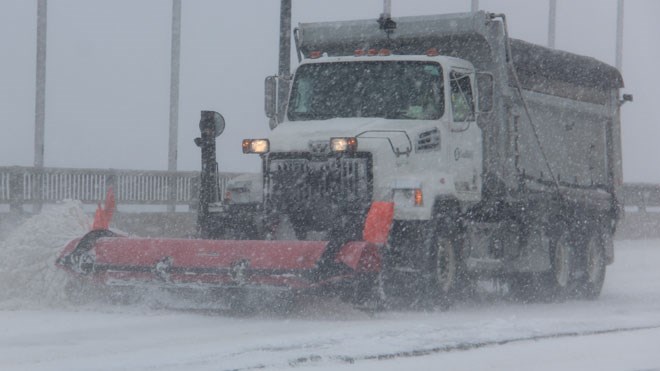After the first major snowfall of the season in Greater Sudbury, marking the informal start of winter, staff responsible for clearing city streets and sidewalks until spring are hoping for a break from Mother Nature.
Severe weather has strained the winter maintenance department's roughly $17 million annual budget over the last several winter seasons. As recently as 2011, the department ran a $2.3 million surplus, thanks to a year of lighter than normal snowfall.
Traditionally, the surpluses in one year helped build a reserve fund that could be tapped to cover cost overruns in other years.
But the reserve fund has been severely drained for successive years. A surplus in 2012 of $700,000 gave way to a $3 million deficit in 2013, a result of heavy snowfall and an extremely cold December.
It was a sign of things to come. Even in 2015, when snowfall wasn't a problem, a warm, wet fall combined with an extremely cold winter led to pipes freezing in more than 1,500 homes – and more red ink.
The city received 66 per cent more snow than usual in 2016, and winter control ended up $2.3 million overbudget, in 2017 it was $850,000 over, and 2018 it was $2.4 million.
This year, the shortfall is expected to reach $4.7 million, thanks to an extra three feet of snow and a whole bunch of pothole repairs last spring.
“I think we're due,” said Infrastructure GM Tony Cecutti, about the chances for a milder winter. “But I'm not going to make any predictions.”
But he's not holding his breath. Cecutti said one of the effects of climate change they are seeing are more frequent severe weather events. Major storms that used to occur once every decade or longer are happening with increasing regularity.
“I think that's one of the things we are definitely seeing,” he said Thursday. “Even in years where it's the same accumulation of snow, the type of snow we see, the combination of rain and ice really, really impact our ability to respond effectively and and cost-effectively in particular.
“Like a late winter storm will be a lot more extreme that it used to be, or an early winter storm, or just weather events in general just more severe than they used to be. So it costs us a lot more now than, say, 20 years ago, for the same total volume of snow.”
Their budget is adjusted every year based on the five-year average of snowfall that his Greater Sudbury, he said, but the adjustments haven't kept up with the changing weather patterns.
“Last year will affect the average. So, you know, we expect the the budget to get adjusted accordingly for 2020.”
Snow removal is a major concern for residents, and is one of the top reasons people call 311 in winter. While not ready for this year, Cecutti said staff are working on building a website that will allow people to track where the plows are in real time, along with information about when their street will be plowed, when the plow was last there clearing the road.
“It is something that we're working on,” he said.
The challenge is finding ways to let people know the condition of the road in real time, considering different roads get different levels of service. Busy arterial roads are plowed more often than residential roads, for example.
“So that's really the information that people need,” he said. “It's translating the location of a plow into a predictive model for condition of a roadway. Doing that is more challenging.
“But it but it is something that we intend to do and work on to improve better customer service.”
The major change this year for plow drivers is adjusting to the changes at Sudbury Transit – now dubbed GOVA. More than 100 bus stops were moved or removed. About 20 per cent of the stops are cleared by the city during winter.
Residents can get information here on when city plows are activated during a storm, and what service level they can expect for their streets. But generally, the busiest streets are plowed between two and four hours after a storm begins and there's at least five cm of snow on the ground. Residential streets are cleared once eight cm of snow falls, within eight to 24 hours after the storm ends.
Sidewalks are cleared within 24 hours of the storm ending, while bus stops are done by the night after the storm ends. And while it may be the dream of people who have to shovel their driveways, Cecutti said there's no practical way for plow drivers to lift their blades to prevent them from pushing snow into driveways.
“And when you have a lot of snow, then there's a lot of snow that gets in front of a driveway, and certain driveways are located in areas where they accumulate more snow than other driveways,” he said. “The intent of the snowplowing routine is to try to spread the snow out as best as possible.”
Cul-de-sacs are a problem, because they are so narrow and harder for drivers to navigate.
“So the intent is not to try to dump it all in one location,” Cecutti said, but it can happen. “It is fairly common to have to go back the next day or a couple days later to clean up a cul-de-sac. The priority is to open up the roadway first, but it's not uncommon to send a 4x4 in or a loader to clean up a cul-de-sac again. Those are routine activities.”
